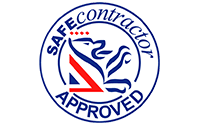As recently as 31st October, Nick Locke of Nictab Ltd wrote an incredibly informative article on the importance of ethernet cable testing and the process that it requires. You can find the full article on the ElectronicsWeekly.com website.
This article will break down Nick’s discussion and look into the various factors that a cabling professional will consider when they complete Ethernet CAT-5e and CAT-6 Testing.
Ethernet cabling is incredibly important to a businesses signal strength and performance. Just as Nick mentions in his recent article, many copper conductors combine to create the cables that we know and use today. These conductors are manufactured and stretched to the tallest limit, ensuring that consumers and businesses receive the very best data flow with minimal disruption.
There are also four pairs of twisted cable throughout each wire but what may surprise you is the fact that each pair is tightened to a different limit. The various levels of tightness ensures that the transmission rate is the best it possibly can be.
Testing Considerations
There are many areas of Ethernet cat-5e and cat-6 testing that needs to be completed. However, we will be discussing the following throughout this article. Insertion Loss, Return Loss, Near-End Cross Talk, Power-Sum Near-End Cross Talk and DC Loop Resistance.
Insertion Loss is one of the non-negotiable tests that data cabling professionals complete. The insertion loss is a measure of the signal strength that a cable receives at the exit of a data cabling connection rather than the entrance. Unfortunately, the longer the wire, the higher the level of insertion loss.
Just like insertion loss, return loss is measured in decibels (dB). The return loss is the amount of signal that gets sent back to the original transmitter. Fortunately, the return loss is not a major factor for signal strength but can contribute to ongoing signal jitters.
If you are into your data cable installations as a hobby, you may not be too familiar with Near-End Cross Talk or N.E.X.T. However, this is an error condition that will describe any radiating signals. It is important to test the N.E.X.T whenever you install data cabling.
N.E.X.T is used in the following Ethernet cat-5e and cat-6 testing process. Power-Sum Near-End Cross Talk is the sum of the values that N.E.X.T produces. The quality of the signal is based on the detrimental effect that N.E.X.T provides.
The level of resistance that a cable pair produces is measured in ohms. The total resistance is otherwise known as DC Loop Resistance. The DC Loop Resistance has less effect on the quality of signal compared to insertion loss.
Slower data networks are predominantly flawed as they are the victim of poorly created data cables. It is imperative that you only ever use high-quality Ethernet cables and have them managed, installed and supported by a qualified and well-respected data cabling professional.









